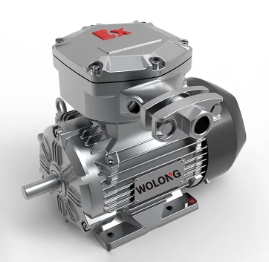In the context of mechanical components of three phase asynchronous motor, bearings are of vital importance in facilitating movement and supporting loads. The two main types of bearings are rolling bearings and plain bearings, each with distinctive characteristics that affect their performance in a range of applications. This article presents a comparative analysis of several key parameters of these two bearing types. It’ll be helpful for the customers to choose the type of electric motor that really matches up their demands.
A. Structure and movement mode comparison
Rolling bearings consist of rolling elements such as balls or rollers that reduce friction by rolling between an inner and outer race. In contrast, plain bearings operate on the principle of surface-to-surface contact, with a lubricating film allowing smooth sliding motion. This fundamental difference in movement patterns greatly affects their design and application.
B. Load-bearing capacity comparison
Rolling bearings generally have a high load-carrying capacity due to the load being distributed over multiple rolling elements. Plain bearings, while capable of supporting heavy loads, may experience higher wear rates under similar conditions, making them less suitable for high load applications.
C. Comparison of friction coefficient and starting friction resistance
Rolling bearings generally exhibit a low coefficient of friction, thus reducing energy losses during operation. On the contrary, sliding bearings may have higher starting friction resistance, which may lead to increased energy consumption during starting.
D. Applicable to running speed comparison
Rolling bearings are designed for higher operating speeds, making them ideal for applications such as electric motors and turbines. However, plain bearings are better suited for low-speed applications, minimizing the risk of overheating.
E. Power loss comparison
Due to lower friction, rolling bearings generally incur less power loss than plain bearings, thus increasing overall system efficiency.
F. Service life comparison
Rolling bearings generally have a long service life due to their design to minimize wear. Plain bearings may require more frequent maintenance and replacement, especially under high load conditions.
G. Rotation accuracy comparison
Rolling bearings offer superior rotational accuracy, making them more popular in precision applications, while plain bearings may introduce more variation in rotational performance.
The choice between rolling bearings and sliding bearings hinges on the particular application requirements, encompassing load capacity, speed, and maintenance considerations. As the leader in motor manufacturing, Wolong equips the Chinese bearing and other international hot brands such as SKF bearing, FAG bearing, NSK bearing and so forth. Grasping these distinctions is essential for maximizing the performance of mechanical systems.
Post time: Nov-06-2024


